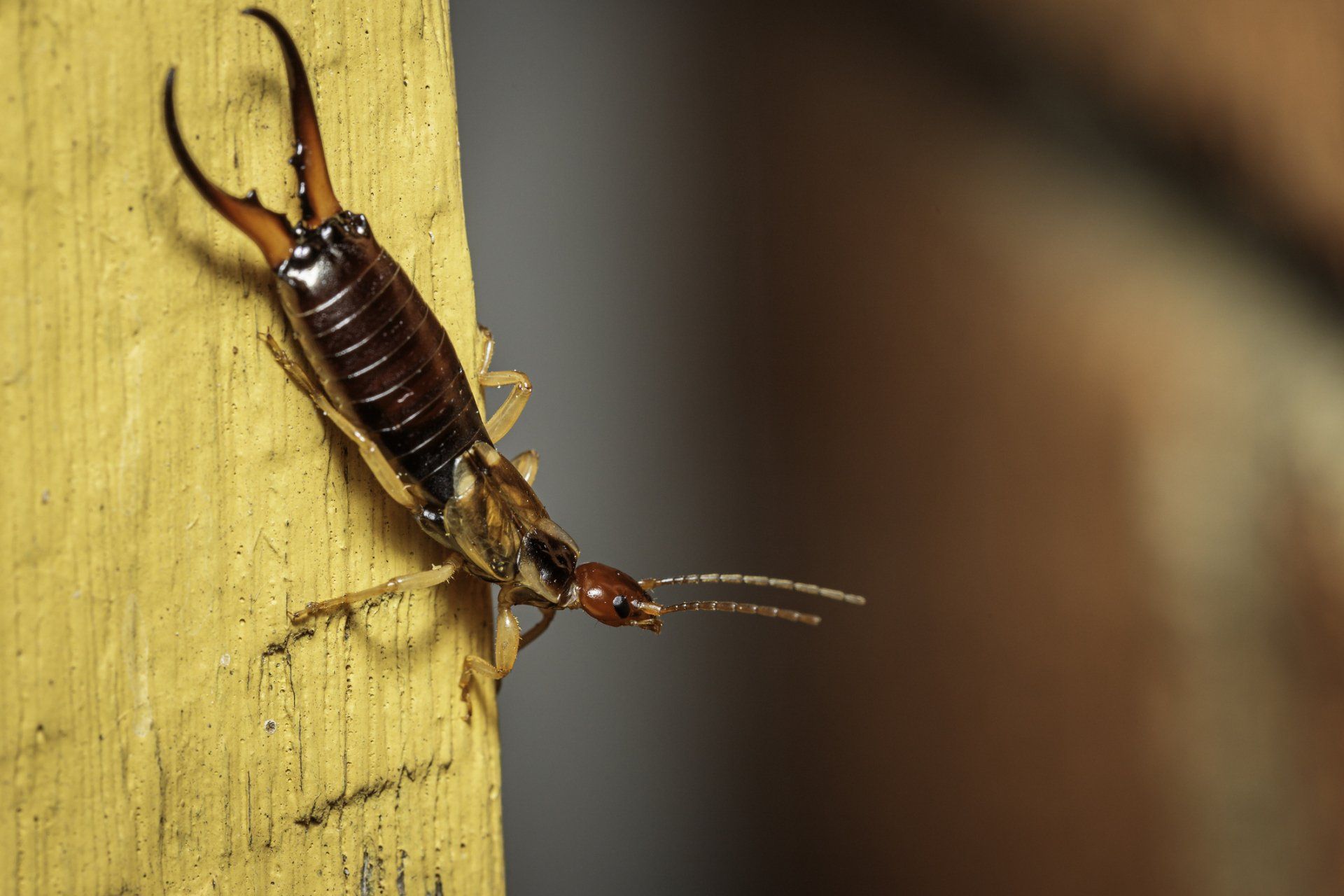Earwigs
Earwigs have long, slender bodies that are dark brown to reddish-brown and flattened from top to bottom; most species have wings, though not all can fly. Earwigs are most well-known for their forceps: appendages (cerci) that extend from the end of their abdomen.
Silverfish
Silverfish have antennae that are as long as their bodies. Their brown, tear-shaped bodies have silver, metallic scales covering them and a distinctive, three-pronged appendage that extends off their hind ends. Silverfish are wingless but move quickly using a wriggling, fish-like motion.
Are earwigs & silverfish dangerous?
Neither earwigs nor silverfish are dangerous pests, but they certainly should not be allowed to live inside your house. Many people shy away from earwigs because of their pincers; the good news is they aren't strong enough to pinch a person's skin. In fact, they use these pincers to defend themselves from each other. Earwigs are garden pests but can only cause significant plant damage if there's a lot of them. When disturbed, earwigs produce an unpleasant odor, and they contaminate pantry items like flour and bread.
When silverfish are inside of your home or business, they can damage personal property by chewing on items such as clothing, upholstery, and paper. Additionally, silverfish contaminate starch pantry product staples like cereals, flour, pasta, and potatoes.
Why do I have an earwig & silverfish problem?
The reason both earwigs and silverfish move indoors is to take advantage of your property's safe, temperature-controlled environment. If the weather outside becomes too cold and wet, or too hot and dry, these pests will move in through cracks in your foundation and spaces under doors. Earwigs can also get inside in boxes, potted plants, or other objects that were once outside. It is also important to know that high moisture attracts silverfish. If silverfish are living in your home or business, it is a good indicator that there may also be a moisture problem.
Where will I find earwigs & silverfish?
Earwigs and silverfish are nocturnal insects. They hide during the day in damp, dark areas such as in compost piles, landscaping ties, leaf litter, mulch, and trash cans that tend to be near the foundation of your home or business. When earwigs and silverfish move inside, they seek out areas that mimic their outdoor environments. Basements, bathrooms, crawlspaces, and laundry rooms are common hideouts. An interesting fact about silverfish is they can survive for weeks without food and water, enabling these pests to continue inhabiting your property for an extended period of time.
How do I get rid of earwigs & silverfish?
If you are looking to get rid of earwigs and silverfish from your Memphis property, the professionals at Dart Pest, Lawn & Wildlife are here to help. Our EPA-trained and certified technicians will solve your occasional invader problems once and for all! Our affordable ongoing services protect people, homes, and yards from earwigs, silverfish, and our area's most common pests. To learn more about our exceptional residential or commercial pest control services, reach out to Dart Pest today!
How can I prevent earwigs & silverfish in the future?
Aside from professional pest control in Memphis, utilize the following tips to help keep earwigs and silverfish out of your property:
- Cut back overgrown vegetation from the outside of your home or business so the sun can hit the soil and dry it out.
- Maintain a barrier between any soil and mulch and your property's foundation.
- Reduce food sources by keeping dry goods stored in airtight containers.
- Seal up spaces in your property's exterior walls and foundation.
- Reduce excess moisture in or around your property.
- Remove fallen trees, leaf piles, and other debris from your home or business.
- Inspect items like potted plants and outdoor furniture for earwigs before bringing them inside.
- Keep gutters and downspouts free of debris and make sure they are directed away from the foundation of your property.







